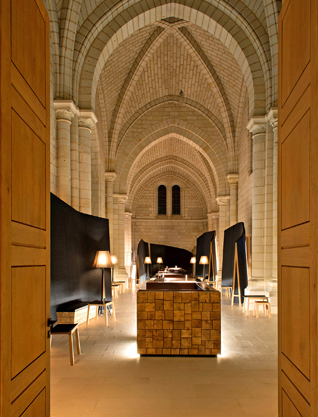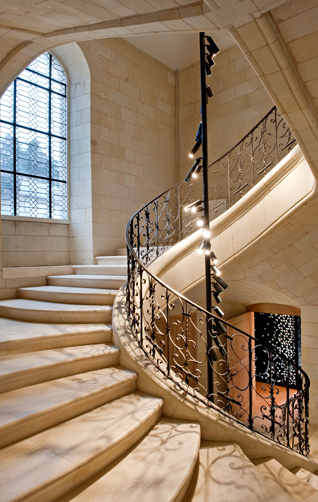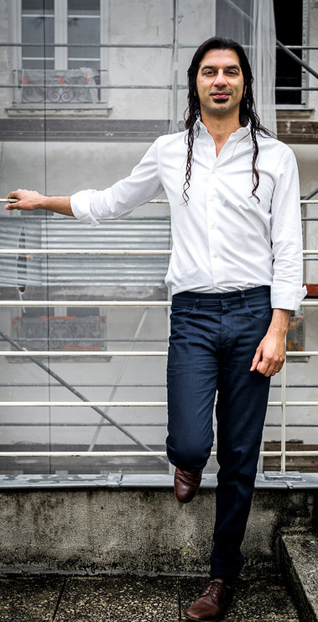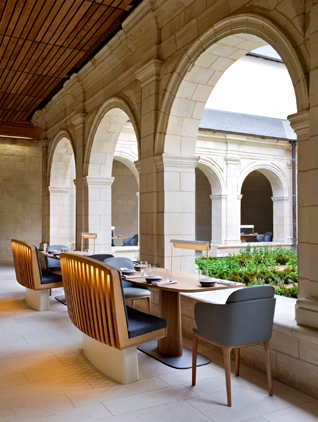People
Creating Simple, Elegant Spaces:
Sikh-Canadian Architect Sanjit Singh Manku
STEVEN KURUTZ
Fontevraud Abbey was founded in the 12th century in the Loire Valley by monks, later became a prison and, since the 1970s, has been a cultural center and one of France’s most treasured historical sites -- It houses Richard the Lionheart’s tomb.
So transforming one of the buildings, the Saint-Lazare priory, into a modern hotel and restaurant presented something of a difficult task for Sanjit Singh Manku, Kenya-born Sikh-Canadian architect, and the French designer Patrick Jouin.
Difficult because the pair not only had to overcome the abbey’s chilly temperatures, but also had to work around strict preservation guidelines and find a way to enliven the monolithic structure.
“Everything is made out of white, chalky limestone,” Sanjit said. “When I say everything, I mean everything.”
He and Patrick Jouin had their own self-imposed rules, too. They didn’t want to create a Hilton with limestone walls and an interesting back story. They wanted simple, elegant spaces that honored the architecture while elevating and modernizing it, and that would allow guests “to understand more about the life of the abbey through the experience of living and sleeping in this place,” Sanjit said.The result, Fontevraud L’Hôtel and Fontevraud Le Restaurant, opened in May. Sanjit recently spoke to a reporter about the project by phone from Paris.
Q. Historical religious spaces are beautiful and grand, but can be vast in scale. How did you design rooms people feel comfortable in?
A. We used micro architecture. It’s almost like creating a little building inside the big building. It readjusts the scale of things so you feel more intimate in something that’s much bigger.
When people walk into one of our spaces, I like watching their shoulders. When someone feels good and their shoulders drop naturally, you know you’ve nailed it.
Did the abbey’s original residents influence your design?
We came up with a phrase: monk-tech. The monks didn’t have a big budget, but they were incredibly crafty. They wouldn’t have six light sources in the same room. They’d have one, and a little mirror that reflected the light. And the mirror would also be something you could hang your coat on.
We said we need to do same thing: to do two or three things with each thing we do. It’s always very cold inside. In order for people to feel warm, we had heaters built into the furniture, so underneath the table it’s radiating heat around you. But some people still aren’t going to be happy, so we decided to make these cloaks.
You mean like a monk’s habit?
They’re made out of wool and lined up on the walls. The colder it gets, the more people don these capes. And they also begin to understand what used to happen there. What used to happen is, you’d go in as an individual and become part of the community. We’re trying to do these subtle things to get people to understand a little bit of what it was like to live there.
For whom were you designing? Is Fontevraud L’Hôtel meant to be a hot-spot, an Ace Hotel in a monastery?
It’s the total opposite of an Ace Hotel. You’re going there for cultural value rather than hip stuff. The building has a history, and we wanted to tap into that history in a way that becomes more profound the longer people stay.
What is incredible is there’s a peace and silence that happens there. When you wake up in the morning and you’ve got this mist covering the hills and there’s this cool chill in the air -- if you can even experience an hour of that, it changes you. It’s getting people to slow down.
How did you and Mr. Jouin respect the sacredness of the space while giving people license to have fun?
Recently we’ve been doing a lot of three-star Michelin restaurants. I happened to be dining in one earlier this week. My reaction to these places is they’re incredible, but they’re so severe. You’re not allowed to be human, and when you’re not allowed to be human, you don’t feel good. And when you don’t feel good, you want to leave. Here, I think what we were searching for was the idea of community. It’s not exactly a smile, but it’s something incredibly satisfying that we’re trying to evoke. It’s the wonder of simple pleasure.
So you had no reservations about including a bar?
In France, wine is not alcohol, it’s another religion.
[Courtesy: The New York Times. Edited for sikhchic.com]
August 15, 2014






